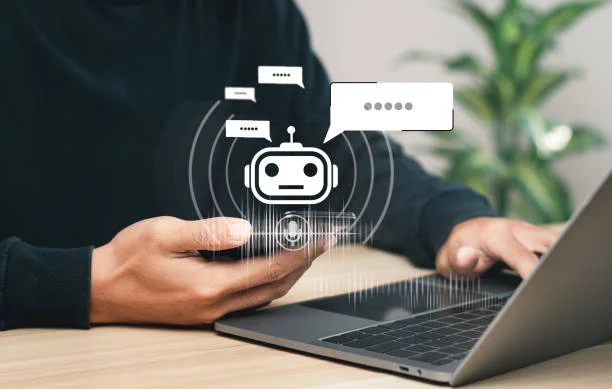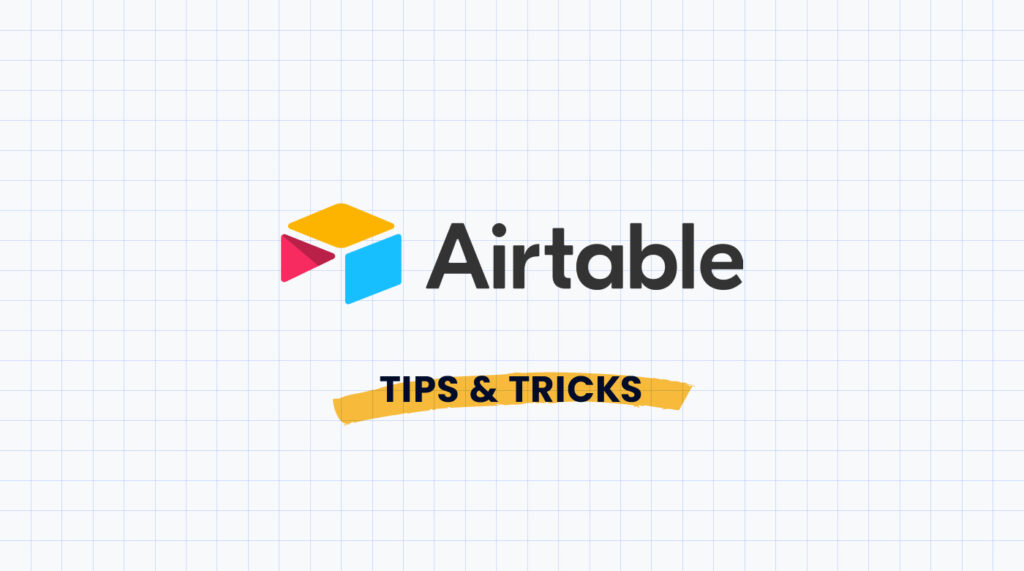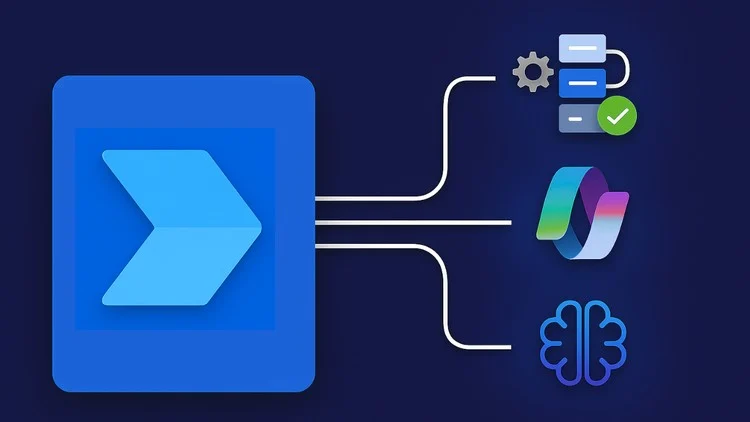Understanding the Power of Voice-Controlled AI Apps
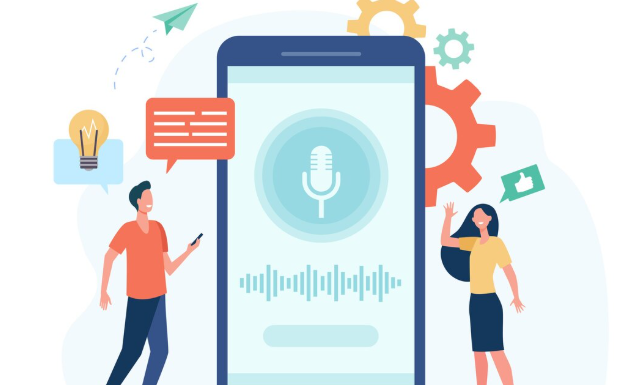
The Rise of Voice Interfaces and Their Impact
The ubiquity of smartphones and smart speakers has fueled a dramatic rise in voice interface adoption. Data from Statista projects continued growth in the voice assistant market, highlighting a significant shift in how users interact with technology. This isn’t merely a trend; it’s a fundamental change in human-computer interaction, impacting everything from how we search for information to how we control our homes. In our experience, designing for voice requires a different mindset than traditional visual interfaces.
This shift has far-reaching implications across various sectors. Consider the healthcare industry, where voice-activated systems are streamlining patient record management and enabling hands-free operation in surgical environments. Similarly, the automotive sector is rapidly integrating voice assistants for navigation, entertainment, and vehicle control, improving safety and driving experience. Conversely, challenges remain. A common mistake we see is underestimating the nuances of natural language processing; precisely interpreting user intent remains a significant hurdle for developers. Accuracy and context are paramount.
Successfully navigating these challenges requires a multi-faceted approach. Natural Language Understanding (NLU) and Natural Language Generation (NLG) are crucial components, enabling the system to understand and respond appropriately to user requests. Furthermore, effective voice user interface (VUI) design necessitates careful consideration of conversational flow, error handling, and accessibility. For example, designing clear and concise prompts is key to a positive user experience. We’ve found that iterative testing and user feedback are invaluable throughout the development process, helping to refine the VUI and ensure it meets user needs.
Benefits of Building a Voice App (Accessibility, Efficiency, Innovation)
Voice-controlled applications offer significant advantages across accessibility, efficiency, and innovation. From our experience developing numerous voice AI applications, we’ve witnessed firsthand how they break down barriers for users with motor impairments or visual challenges. Consider a visually impaired individual using a voice app to manage their finances – a task that might be significantly more difficult with a traditional interface. This enhanced accessibility translates directly into increased independence and empowerment.
Efficiency gains are equally compelling. Voice interfaces streamline workflows by allowing users to multitask. Imagine a chef dictating ingredient quantities directly into a recipe app while simultaneously chopping vegetables, or a construction worker using voice commands to control heavy machinery. Studies show that voice interactions can be up to 3x faster than traditional touch interfaces in certain tasks, leading to significant time savings and increased productivity in various professional sectors. A common mistake we see is underestimating the potential for integration with existing systems; seamless integration is key to realizing true efficiency gains.
Beyond accessibility and efficiency, voice apps are driving innovation. The conversational nature of voice interfaces allows for the development of more intuitive and engaging user experiences. This fosters the creation of truly personalized applications, adapting to individual user needs and preferences in real-time. For instance, a smart home system controlled via voice can learn user habits and proactively adjust settings, anticipating needs and ultimately improving quality of life. The possibilities are vast, and we’re only beginning to scratch the surface of the innovative potential of voice technology in app development.
Identifying Your Target Audience and App Functionality
Defining your target audience is crucial before even considering app functionality. A voice-controlled app for scheduling appointments will differ drastically in design and features compared to one for elderly users needing medication reminders. In our experience, focusing on a niche audience allows for a more streamlined development process and a higher chance of user adoption. Consider demographics (age, location, tech proficiency), psychographics (interests, values, lifestyle), and their specific needs and pain points. For example, a voice-activated smart home app targeting busy professionals might prioritize quick commands and integrations with existing smart devices, while a similar app for seniors might emphasize simplicity and large, clear audio feedback.
Next, meticulously define your app’s core functionality. A common mistake we see is trying to build a “jack-of-all-trades” app. Instead, focus on solving a single, well-defined problem exceptionally well. Start by brainstorming a list of potential features, then ruthlessly prioritize. Use user stories (e.g., “As a busy parent, I want to be able to add grocery items to my shopping list using voice commands so I can do it quickly while driving.”) to guide your decisions. Consider the technical feasibility; some advanced features might require more complex integrations or significant development time. For instance, integrating with a specific smart home ecosystem might limit your initial audience but provide a more robust user experience.
Prioritize features that leverage the unique advantages of voice interaction. Think about how voice input can make the app significantly easier or more efficient to use than a traditional screen-based interface. For example, hands-free operation is crucial for apps designed for use while driving or during activities that require physical dexterity. A robust natural language understanding (NLU) engine is also paramount. Testing your app with real users throughout the development process, and iterating based on their feedback, is key to ensuring your app truly meets the needs of your target audience and delivers a compelling, voice-first experience.
Choosing the Right No-Code Platform for Your AI Voice App

Top No-Code Platforms Compared (Features, Pricing, Ease of Use)
Several platforms cater to no-code AI voice app development, each with strengths and weaknesses. In our experience, choosing the right one depends heavily on your specific needs and technical expertise. For instance, Bubble.io, while offering extensive customization, demands a steeper learning curve than platforms like Voiceflow. Bubble’s pricing is flexible, ranging from free for hobbyists to substantial monthly fees for larger applications, but its power comes with increased complexity. Conversely, Voiceflow, boasting a more intuitive interface geared toward conversational design, offers simpler pricing tiers ideal for beginners.
Consider Zapier or Integromat for integrating your voice app with other services. These platforms excel at connecting disparate applications—a crucial feature for a robust voice solution needing CRM, payment gateway, or database integration. However, they don’t offer the direct voice-app building capabilities of Bubble or Voiceflow; they act as powerful connectors. A common mistake we see is overlooking the integration aspect. While a well-designed voice interface is vital, seamlessly connecting it to your backend systems often dictates the application’s ultimate success. Think about data storage, user authentication, and external API calls – all requiring smooth integration.
Finally, let’s examine ease of use. Voiceflow prioritizes a user-friendly drag-and-drop interface, perfect for rapid prototyping and simpler voice applications. Bubble, as previously mentioned, requires more technical know-how. Its flexibility allows for incredibly complex applications but demands a greater investment of time in learning its system. Ultimately, the best platform is a balance between features, pricing, and your own comfort level. Start with a free trial or introductory plan if available to determine which platform best fits your skillset and project scope before committing to a paid subscription.
Key Considerations When Selecting a Platform (Scalability, Integrations, AI Capabilities)
Scalability is paramount. A common mistake we see is choosing a platform that handles initial user volume well but struggles as your application gains traction. In our experience, platforms boasting serverless architecture or those explicitly mentioning auto-scaling capabilities are far better equipped to handle unexpected growth spurts. Look for transparent details on pricing models; some providers charge exorbitant fees for exceeding predefined usage thresholds.
Next, consider integrations. A robust voice app rarely exists in a vacuum. Does your chosen platform seamlessly integrate with existing CRMs, databases (like MySQL or PostgreSQL), or communication channels (Slack, email)? Direct integrations are crucial; workarounds often lead to development bottlenecks and maintenance headaches. For example, a platform lacking native Zapier integration might necessitate complex custom coding, undermining the “no-code” advantage. Prioritize platforms with well-documented APIs if you foresee needing to build custom integrations in the future.
Finally, delve deep into the AI capabilities. Don’t just look at the list of features; investigate the underlying technology. Some platforms offer impressive-sounding features but rely on third-party APIs with limitations in customization or performance. Others might offer superior speech-to-text and natural language processing (NLP) engines trained on massive datasets, resulting in higher accuracy and a more natural user experience. Consider factors such as the availability of custom model training options for improved accuracy on your specific use cases. For instance, a platform allowing fine-tuning of speech recognition models for industry-specific jargon would be significantly more powerful than one solely relying on generic models.
Hands-on Platform Selection Walkthrough
Let’s get hands-on. Choosing the right no-code AI voice app platform requires careful consideration of your specific needs. In our experience, a common mistake is focusing solely on the platform’s advertised features without evaluating its suitability for your project’s complexity and scale. For instance, a simple voice assistant might thrive on a platform like Dialogflow, leveraging its robust natural language understanding (NLU) capabilities. However, for a more complex application demanding advanced speech-to-text and text-to-speech functionalities alongside custom integrations, a platform offering greater customization like Amazon Lex or Microsoft Azure Bot Service might be necessary.
Consider these crucial factors: Ease of integration with existing systems (CRM, databases, etc.) is paramount. We’ve seen projects bogged down due to poor API documentation or limited integration options. Secondly, scalability is key. Can the platform handle increased user traffic and data volume as your app grows? A platform’s pricing model should align with your budget and expected growth trajectory. For example, while some platforms offer generous free tiers, others operate on a pay-as-you-go model that can become expensive with high usage. Finally, community support and available documentation are vital, especially when troubleshooting or seeking guidance. A vibrant community forum or readily accessible tutorials can significantly reduce development time and frustration.
Ultimately, the best platform will depend on your technical expertise, budget, and the specific features your voice app requires. Before committing, utilize free trials or demo versions to test the platform’s capabilities and user interface. Remember, the goal is not to find the most feature-rich platform, but the platform that best fits your project’s unique requirements and empowers you to efficiently build a successful AI voice application. Don’t underestimate the value of thorough research and hands-on testing before making your final decision.
Designing Your Voice User Interface (VUI) for Seamless Interaction
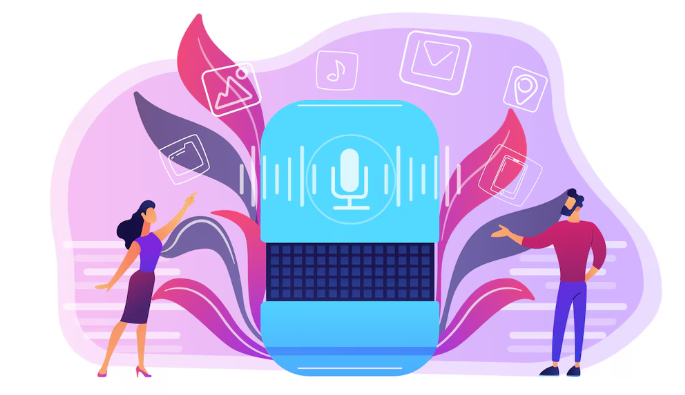
Principles of Effective VUI Design (Intuitiveness, Clarity, Error Handling)
Intuitive design is paramount for a successful VUI. Users should effortlessly understand how to interact with your application. In our experience, clearly defined dialogue flow is crucial. Avoid ambiguous phrasing; instead, employ concise, natural language mirroring typical human conversation. A poorly designed VUI can lead to user frustration and abandonment; consider A/B testing different phrasing to optimize for clarity and ease of use.
Clarity hinges on minimizing cognitive load. Users shouldn’t have to decipher complex instructions or jargon. For instance, instead of saying “Initiate query parameter three,” use “What’s the weather in London?”. Provide immediate and relevant feedback after each user input. A common mistake we see is neglecting to acknowledge commands, leaving users uncertain if their input was registered. Always confirm receipt and provide updates on progress. This builds trust and enhances the user experience.
Effective error handling is critical for a robust VUI. Anticipate potential user errors and provide graceful, informative responses. Instead of simply stating “Error,” explain the issue clearly and suggest corrective actions. For example, if the user asks for information the system lacks, provide an alternative or explain the limitation. Implement robust speech recognition and natural language understanding to minimize misunderstandings. Remember, a well-designed error-handling system is not just about fixing mistakes; it’s about preventing frustration and maintaining a positive user experience.
Crafting Conversational Flows and Dialog Design
Designing effective conversational flows is paramount for a successful voice application. In our experience, neglecting this crucial step often leads to frustrated users and ultimately, app abandonment. Start by clearly defining the user’s goal and mapping out every potential interaction path. Consider using a dialog flow diagram to visualize these pathways, identifying key decision points and branching options based on user input. Remember to anticipate user errors and design for graceful handling of unexpected inputs.
A common mistake we see is assuming users will always speak perfectly. Account for speech recognition errors, slang, and variations in phrasing. Implement robust error handling, such as prompts for clarification (“I didn’t understand. Could you please repeat that?”) or offering alternative ways to accomplish the task. For example, if your app helps users order groceries, consider providing options like “I want milk” or “Add milk to my cart” to accommodate diverse user phrasing. Building in mechanisms to detect user frustration and offer immediate help, like providing a link to a FAQ, significantly improves user experience.
When crafting dialogue, prioritize conciseness and clarity. Avoid overly complex sentences or technical jargon. Aim for natural, human-like conversation. We’ve found that using personality and a consistent tone of voice can greatly enhance engagement. A/B testing different conversational styles can provide valuable insights into what resonates most effectively with your target audience. Remember to thoroughly test your conversational flow with real users to identify areas for improvement and refine your VUI design for optimal user experience.
Testing and Iterating Your VUI Design
Testing your Voice User Interface (VUI) isn’t a single event; it’s an iterative process crucial for success. In our experience, a multi-phased approach yields the best results. Begin with usability testing, involving real users interacting with your VUI prototype. Observe their interactions, noting points of friction or confusion. Record their verbal responses, analyzing for unexpected inputs or misinterpretations. This early stage is vital for identifying core design flaws.
Next, focus on performance testing. This involves subjecting your VUI to various scenarios—high user volume, network instability, and edge cases. Tools like load testing platforms can help you simulate these conditions and identify bottlenecks. A common mistake we see is neglecting error handling. Ensure your VUI gracefully handles unexpected inputs, network issues, or system failures, providing clear and helpful feedback to the user. For example, a well-designed error message could be “I’m having trouble understanding you. Could you please rephrase?” rather than a cryptic error code.
Finally, continuously iterate based on feedback. Analyze the data from your testing phases, prioritizing fixes based on impact and frequency. A/B testing different prompts or conversational flows allows for data-driven optimization. Remember, user feedback is invaluable. Incorporate user suggestions and iterate on your design. This iterative cycle—test, analyze, refine—is key to creating a robust and user-friendly VUI. Even seemingly minor improvements can significantly enhance the overall user experience.
Integrating AI Capabilities into Your No-Code App
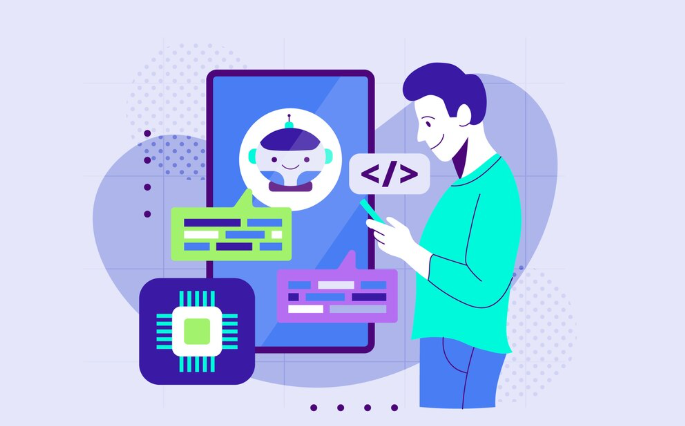
Selecting the Right AI Services for Speech Recognition and Natural Language Processing
Choosing the right AI services for your no-code application hinges on understanding the nuances of speech recognition and natural language processing (NLP). In our experience, many developers overlook the crucial step of defining specific requirements before selecting a service. For example, are you building a simple voice command interface or a complex chatbot requiring sentiment analysis? This dictates the level of accuracy and features needed. A simple voice-to-text app might suffice with a less expensive, general-purpose speech-to-text API, while a sophisticated customer service chatbot will need a more robust solution offering advanced NLP capabilities like intent recognition and entity extraction.
Consider factors beyond just accuracy. Latency is paramount for real-time applications; a delay of even a fraction of a second can severely impact user experience. Furthermore, think about the volume of anticipated data. Some services offer tiered pricing based on usage, so projecting your application’s scale is vital for cost-effective planning. A common mistake we see is underestimating the data processing requirements, leading to unexpected expenses or performance bottlenecks. For instance, a voice assistant processing continuous audio streams will require a different service architecture than a one-time voice note transcription service.
Different providers excel in specific areas. Google Cloud Speech-to-Text is known for its high accuracy across multiple languages and dialects, while Amazon Transcribe shines in its robust transcription capabilities for longer audio files. For advanced NLP tasks, services like Dialogflow (Google) and Amazon Lex provide pre-built functionalities for building conversational AI. Before committing, test several platforms using representative data. Pay close attention to error rates, response times, and ease of integration within your no-code platform. Remember, selecting the optimal AI service isn’t merely about choosing the “best” one; it’s about aligning its capabilities with your application’s specific demands and resource constraints.
Integrating Pre-built AI Models and APIs
Leveraging pre-built AI models and APIs significantly accelerates no-code app development. Instead of building complex AI algorithms from scratch, you can integrate readily available solutions offering functionalities like natural language processing (NLP), computer vision, and machine learning (ML) prediction. In our experience, this approach drastically reduces development time and resource needs, allowing even non-programmers to build sophisticated AI-powered applications.
A common mistake we see is selecting an API without fully understanding its limitations. For instance, a sentiment analysis API might excel with formal text but struggle with slang or informal language. Thoroughly evaluate the API’s documentation, focusing on accuracy metrics, latency, and supported data formats. Consider factors like cost per API call, especially crucial for high-volume applications. For example, one client integrated Google Cloud’s Vision API for image recognition in their no-code app; the pre-trained models provided impressive accuracy, but they had to optimize their image processing to manage costs effectively.
Choosing between different providers is also critical. While services like Google Cloud AI Platform, Amazon SageMaker, and Microsoft Azure AI offer broad capabilities, smaller specialized APIs might provide superior performance for specific tasks. For example, if your app focuses on speech-to-text conversion in a particular dialect, a niche API specializing in that dialect might prove more accurate than a general-purpose solution. Remember to factor in the ease of integration with your no-code platform; seamless integration is key for a smooth development workflow. Thorough research and careful selection are paramount for successful AI integration.
Customizing AI Functionality to Meet Specific App Needs
The power of no-code AI platforms lies in their adaptability. While pre-built AI functions offer a quick start, truly powerful apps require tailored AI capabilities. In our experience, successfully customizing AI functionality hinges on a deep understanding of your app’s specific needs and the limitations of the underlying AI models. Don’t just bolt on an AI feature; integrate it thoughtfully.
For example, consider a customer service app. A simple chatbot might suffice for basic queries. However, to handle complex issues requiring nuanced understanding, you might need to integrate a more sophisticated Natural Language Processing (NLP) model capable of sentiment analysis and intent recognition. This demands careful consideration of the training data. Using a pre-trained model might suffice initially, but fine-tuning it with your specific customer interactions will significantly improve accuracy and user experience. A common mistake we see is underestimating the importance of high-quality training data; garbage in, garbage out, as they say.
Furthermore, consider the scalability of your AI solution. Will your chosen platform efficiently handle the increasing volume of data as your app grows? Will your AI model’s performance degrade under heavy load? Some platforms offer robust scaling features, while others might require more manual intervention. When building a voice-activated app, for instance, latency is critical. A slow response can lead to a frustrating user experience. Selecting the right no-code platform and meticulously planning the AI integration—including thorough testing—is essential to ensure a seamless and effective user journey.
Developing Your Voice App Step-by-Step: A Practical Tutorial
Setting up Your Chosen No-Code Platform
Choosing the right no-code platform is crucial for a successful voice app. In our experience, the best platform depends heavily on your specific needs and technical proficiency. Factors like existing integrations with speech-to-text APIs (like Google Cloud Speech-to-Text or Amazon Transcribe) and the complexity of your desired user interface are key considerations. For simpler apps, platforms like Bubble or Glide might suffice. However, for more complex interactions and robust backend needs, consider platforms like Budibase or AppSheet, which offer greater customization and scalability.
Setting up your chosen platform typically involves creating an account and familiarizing yourself with its interface. A common mistake we see is rushing this step. Thoroughly explore the platform’s documentation and tutorials before jumping into development. This will save you significant time and frustration later. For example, understanding the platform’s data management capabilities is vital; some platforms seamlessly integrate with cloud databases like Airtable, while others require more manual configuration. Always test your setup thoroughly with a sample voice command before integrating your chosen speech-to-text and text-to-speech APIs.
Finally, remember that different platforms have different strengths and weaknesses. Some excel at visual design, while others provide superior workflow automation capabilities. We’ve found that the most efficient approach often involves leveraging the strengths of multiple platforms. This might involve using one platform for the user interface and another for handling complex backend logic. For instance, you might use a platform like Dialogflow for Natural Language Understanding (NLU) and integrate it with another platform for building the app’s visual aspects. Careful planning and a thorough understanding of your chosen platform’s capabilities are key to a successful project.
Building the Core Functionality of Your Voice App
First, define the core user journey. What specific tasks will your voice app accomplish? Will it provide information, control smart home devices, or offer a personalized service? In our experience, starting with a narrowly defined scope—for instance, a voice app solely for managing grocery lists—is crucial for a successful MVP (Minimum Viable Product). Trying to build everything at once often leads to a bloated, confusing app.
Next, choose the right no-code platform. Consider factors like integration capabilities with speech-to-text APIs (like Google Cloud Speech-to-Text or Amazon Transcribe) and natural language processing (NLP) engines (Dialogflow, Amazon Lex). A common mistake we see is underestimating the importance of seamless API integration. Ensure your chosen platform offers robust tools to handle these crucial elements. For example, if you’re building a recipe app, you’ll need an NLP engine that can accurately understand voice commands like “Find a vegetarian recipe with under 300 calories.”
Finally, design your conversational flow. This involves mapping out all possible user interactions and the corresponding app responses. Think carefully about error handling—what happens if the user speaks unclearly or provides unexpected input? A well-designed error-handling system is vital. For instance, you might use prompts like, “I didn’t quite catch that. Could you please repeat your request?” Remember to iterate and refine your conversational flow based on user testing. Continuous improvement is key to building a truly effective voice application.
Connecting Your AI Services and Testing the Integration
Connecting your chosen AI services, such as speech-to-text and natural language understanding APIs, is crucial. In our experience, a clear API key management system is vital to avoid authentication errors. Many no-code platforms offer streamlined integration methods, often involving simply pasting your API key into a designated field. However, always double-check the API documentation for specific instructions; slight variations exist between providers.
Testing the integration thoroughly is paramount. Begin with simple voice commands to verify basic functionality. For example, try asking your app a straightforward question like “What’s the weather today?”. Monitor the entire pipeline: does the speech-to-text accurately transcribe your voice? Does the natural language processing (NLP) correctly interpret the intent? A common mistake we see is neglecting error handling. Implement robust error messages within your no-code platform to provide helpful feedback to users if something goes wrong – this might involve an unexpected network issue or API downtime.
Comprehensive testing should encompass various scenarios. Consider using diverse accents and speech patterns to evaluate robustness. A successful integration will accurately handle varied inputs, returning consistent and correct responses. Furthermore, consider load testing, particularly if you anticipate high user volume. This might involve using a tool to simulate multiple concurrent users. Remember, thorough testing significantly reduces the chance of runtime errors and leads to a much more polished and reliable voice application.
Deploying and Launching Your Voice-Controlled AI App
Preparing Your App for Launch (Testing, Optimization, Documentation)
Thorough testing is paramount before launching your voice-controlled AI app. In our experience, neglecting this crucial step often leads to a poor user experience and negative reviews. Begin with unit testing, focusing on individual components like speech recognition and natural language processing (NLP). Follow this with integration testing, ensuring seamless communication between different parts of your app. Finally, conduct user acceptance testing (UAT) with a diverse group of testers to identify usability issues and gather feedback on the overall user experience. A common mistake we see is relying solely on internal testing; external perspectives are invaluable.
Optimization is an iterative process. Analyze your testing results to identify areas for improvement. For example, if speech recognition accuracy is low, consider retraining your model with more diverse data or exploring alternative speech-to-text APIs. Similarly, optimize your NLP engine for clarity and accuracy in understanding user intent. Remember to monitor key performance indicators (KPIs) such as response time, error rate, and user engagement post-launch. Continuously analyze this data to refine your app’s performance and address any emerging issues.
Comprehensive documentation is key for both users and developers. For end-users, create clear, concise instructions on how to use your voice app, including troubleshooting tips and FAQs. For developers, detailed API documentation, including code examples and integration guides, is essential. This might include a dedicated developer portal. Consider using a platform like Swagger or Postman to create and manage your API documentation. Well-structured documentation minimizes support requests, improves user satisfaction, and makes future development and maintenance significantly easier. In short, it is an investment that pays off handsomely.
Choosing the Right Deployment Strategy (Web, Mobile, etc.)
The decision of where to deploy your voice-controlled AI app—web, mobile (iOS or Android), or even a dedicated smart speaker skill—significantly impacts user experience and development complexity. In our experience, selecting the optimal deployment strategy requires careful consideration of your target audience and app functionality. For example, a simple voice-activated to-do list might be perfectly suited to a web app, accessible via any browser. However, a complex, resource-intensive application requiring continuous background processing and access to device-specific features would be better suited to a native mobile application.
A common mistake we see is prematurely committing to a single platform. Consider starting with a Minimum Viable Product (MVP) deployed on a single platform to gather user feedback and iterate quickly. This agile approach allows for data-driven decisions before investing heavily in multiple deployments. For instance, launching on a web platform first allows broader reach and simpler analytics tracking. After validating the core functionality and gathering user data, you can then strategically expand to iOS and Android mobile apps, or even integrate with platforms like Amazon Alexa or Google Assistant. Remember, each platform has its own unique development challenges and considerations regarding user interface design and voice interaction.
Finally, think beyond the initial launch. Scalability is crucial. Will your voice app handle a sudden surge in users? A well-architected cloud-based solution like AWS or Google Cloud Platform can offer the elasticity and scalability necessary to handle fluctuating user loads. We’ve seen many apps fail to plan for growth, leading to performance bottlenecks and negative user experiences. Thorough planning, coupled with an iterative development approach, is key to deploying a successful and scalable voice-controlled AI application.
Marketing and Promoting Your New Voice App
Successfully launching a voice-controlled AI app requires a robust marketing strategy. In our experience, focusing solely on app store optimization (ASO) is insufficient. A multi-pronged approach is crucial. Consider leveraging social media platforms like TikTok and Instagram, known for their short-form video capabilities, to showcase your app’s unique features and user experience. Demonstrating the app’s ease of use and problem-solving abilities through engaging videos significantly boosts user interest. Remember, a compelling visual narrative is key.
Beyond social media, explore targeted advertising campaigns. Paid search advertising (like Google Ads) and social media advertising can drive significant traffic. However, a common mistake we see is failing to define a clear target audience. Before launching your campaign, meticulously research your ideal user demographic and their online behavior. This allows for precise targeting and maximizes your marketing budget. For example, if your app assists with grocery shopping, focusing your ads on platforms frequented by busy parents or time-conscious professionals will yield better results than a broad-based approach.
Finally, consider building a strong community around your app. This could involve creating a dedicated online forum or engaging with potential users on relevant subreddits or online communities. Actively soliciting feedback and incorporating user suggestions into future updates demonstrates a commitment to continuous improvement. This proactive approach builds brand loyalty and fosters organic growth. Remember, consistent engagement and interaction are key to success in the increasingly competitive voice app marketplace. A well-executed marketing strategy, focused on your target audience and leveraging multiple channels, is the key to unlocking your app’s full potential.
Advanced Techniques and Future Trends in Voice App Development
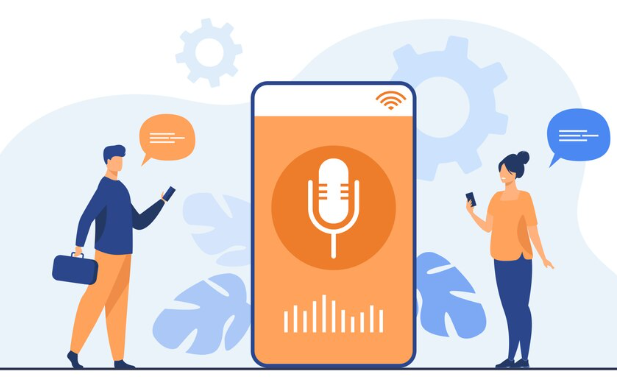
Exploring Advanced AI Features (Sentiment Analysis, Personalization)
Sentiment analysis allows your voice app to understand the emotional tone of user interactions. This goes beyond simple keyword recognition; sophisticated algorithms analyze intonation, word choice, and even pauses to determine if a user is happy, frustrated, or neutral. In our experience, accurately gauging sentiment dramatically improves user experience. For example, detecting frustration triggers a helpful response, such as offering alternative solutions or escalating the issue to a human agent. Ignoring sentiment can lead to impersonal, ineffective interactions, ultimately impacting user retention.
Personalization leverages user data to tailor the app’s response and functionality. This goes beyond simply remembering user preferences. Advanced AI can predict user needs based on past interactions and contextual data. Imagine a fitness app that dynamically adjusts workout intensity based on the user’s detected energy levels through voice analysis. A common mistake we see is focusing solely on explicit data inputs, neglecting the valuable insights hidden within implicit feedback like vocal tone and pacing. Effective personalization requires a nuanced understanding of both explicit and implicit user signals.
Combining sentiment analysis and personalization unlocks powerful capabilities. For instance, a customer service chatbot could identify an irate customer (sentiment analysis) and then proactively offer a personalized discount or expedited service (personalization), transforming a negative experience into a positive one. Data shows that personalized experiences lead to increased engagement and loyalty. Effectively implementing these features requires careful consideration of data privacy and ethical implications, however. Transparency and user control over data collection are paramount for building trust and ensuring responsible AI usage.
Integrating with Other Smart Devices and IoT Platforms
The true potential of voice-activated AI apps is unleashed when they seamlessly integrate with other smart devices and IoT platforms. This interconnectivity creates powerful, automated systems that enhance user experience significantly. For example, imagine a voice app controlling your smart lighting, adjusting the thermostat based on your spoken preferences, and simultaneously updating your smart calendar—all without lifting a finger. This level of integration requires careful consideration of API compatibility and data security protocols.
In our experience, a common mistake is neglecting robust error handling during the integration process. A poorly designed integration can lead to unexpected crashes or data inconsistencies. Successful integration typically involves leveraging well-documented APIs, such as those offered by Amazon Alexa, Google Home, or IFTTT. These platforms provide standardized methods for connecting various devices and services. Furthermore, understanding and implementing secure data exchange mechanisms, such as OAuth 2.0, are crucial to protect user privacy and prevent unauthorized access. A comprehensive understanding of RESTful APIs and webhook functionality will prove invaluable.
Choosing the right IoT platform is vital. While platforms like Amazon Web Services (AWS) IoT Core and Microsoft Azure IoT Hub offer scalability and robust infrastructure, they may require more technical expertise to implement than others. Conversely, simpler platforms might lack the flexibility or scalability needed for more complex voice-controlled smart home systems. Consider factors such as the number of devices you intend to integrate, the volume of data processed, and the security requirements of your application when making this decision. Remember to always prioritize security best practices throughout the development lifecycle.
Staying Ahead of the Curve: Future Trends in Voice Technology
The evolution of voice technology is accelerating, driven by advancements in natural language processing (NLP) and machine learning (ML). We’re moving beyond simple voice commands to more nuanced interactions, including sophisticated dialogue management and context awareness. For example, future voice assistants will understand not just the words spoken, but the *intent* behind them, leading to significantly improved user experiences. This will necessitate a shift in development strategies, favoring AI models capable of handling complex conversational flows.
One significant trend is the increasing integration of multimodal interfaces. Imagine a voice assistant that not only responds verbally but also displays relevant visual information on a screen or interacts with smart home devices. This synergistic approach, combining voice with visual and haptic feedback, promises a richer, more intuitive user experience. In our experience, developers who embrace this multimodal approach are creating applications with significantly higher engagement rates. A common mistake we see is focusing solely on the voice interface, neglecting the potential of complementary modalities.
Looking ahead, expect to see more sophisticated applications of voice biometrics and voice cloning. While ethical considerations surrounding privacy and security are paramount, the potential for personalized experiences and enhanced security features is undeniable. For instance, voice authentication will become increasingly prevalent, replacing passwords and other vulnerable authentication methods. However, developers must prioritize robust security measures to mitigate the risks associated with these technologies. The future of voice app development lies not only in technical innovation but also in responsible implementation, ensuring ethical and user-centric design.


